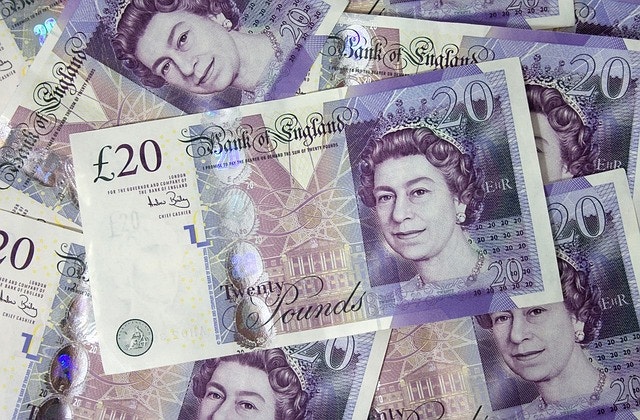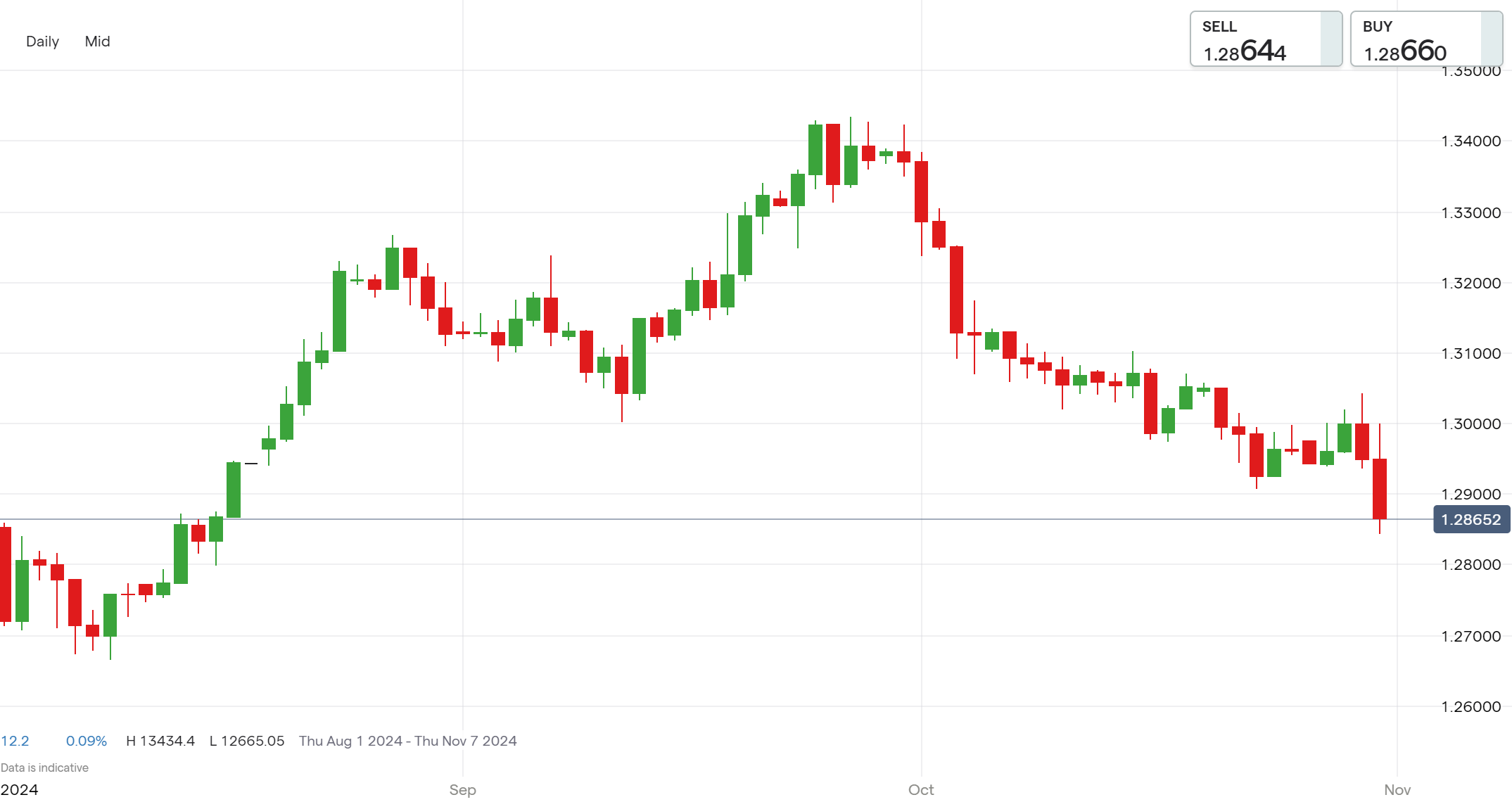Pound at 3-month lows against US dollar
Explore the latest GBP/USD movements amid UK budget changes and interest rate decisions, highlighting potential impacts on the pound and market volatility. Stay informed on fiscal and economic trends.

Key points
- GBP/USD sank to 1.28631, lowest since August 16, contrasting with October 1st high of 1.33851
- UK budget introduces tax hikes, impacting business sentiment and pound's value
- Bank of England holds interest rates at 5%, with inflation expected to rise to 2.5%
- Pound faces potential volatility due to mixed economic signals and fiscal changes
GBP/USD sinks below 1.29000
The GBP/USD pair, known as "The Cable," has fallen to 1.28631 per US dollar—its lowest value since August 16th. This sharp decline comes after reaching a monthly high of 1.33851 on October 1st, highlighting increased volatility in the forex market. The fluctuations may result from shifting investor sentiment about the UK's economic trajectory. As traders adjust their strategies, the Cable's movement often reflects broader uncertainties about future economic conditions and policy changes.
GBP/USD price history

UK budget statement delivery contributes to GBP volatility
The recent budget statement by British finance minister Rachel Reeves introduces substantial tax hikes and fiscal rule changes, aiming for a balanced budget by 2029/30. While these measures could generate significant revenue and support infrastructure investment, they also risk dampening business sentiment due to increased costs. Investors are closely monitoring the potential impact on economic growth and the pound's value, with the Office for Budget Responsibility forecasting modest growth. Given these fiscal strategies, the pound may experience heightened volatility as markets respond to both domestic and international economic implications.
How could potential upcoming interest rates cuts affect the pound?
The Bank of England held its interest rate steady at 5% in September 2024, a move that met market expectations but highlighted inflationary pressures. With inflation expected to rise to 2.5% by year-end, the Bank plans to reduce its government bond holdings by £100 billion. These decisions could have mixed impacts on the pound. While stable rates might offer some support, the combination of moderate growth and inflation could cap potential gains, creating a complex trading environment for the pound.
What’s next for GBP/USD?
The decline of GBP/USD below 1.29000 illustrates concerns about the UK economy and investor sentiment. The budget's tax hikes, although providing fiscal headroom, might hinder business outlook and growth, affecting the pound negatively. The Bank of England's rate decisions, alongside fiscal measures, suggest continued GBP volatility. As markets adjust to evolving data and fiscal impacts, GBP/USD is likely to remain responsive to economic indicators and policy shifts, keeping traders vigilant in their assessments.
How to trade US dollar
- Open an account to get started, or practice on a demo account
- Choose your forex trading platform
- Open, monitor, and close positions on USD pairs
Trading forex requires an account with a forex provider like tastyfx. Many traders also watch major forex pairs like EUR/USD and USD/JPY for potential opportunities based on economic events such as inflation releases or interest rate decisions. Economic events can produce more volatility for forex pairs, which can mean greater potential profits and losses as risks can increase at these times.
You can help develop your forex trading strategies using resources like tastyfx’s YouTube channel. Our curated playlists can help you stay up to date on current markets and understanding key terms. Once your strategy is developed, you can follow the above steps to opening an account and getting started trading forex.
Your profit or loss is calculated according to your full position size. Leverage will magnify both your profits and losses. It’s important to manage your risks carefully as losses can exceed your deposit. Ensure you understand the risks and benefits associated with trading leveraged products before you start trading with them. Trade using money you’re comfortable losing. Past performance is not indicative of future results.
